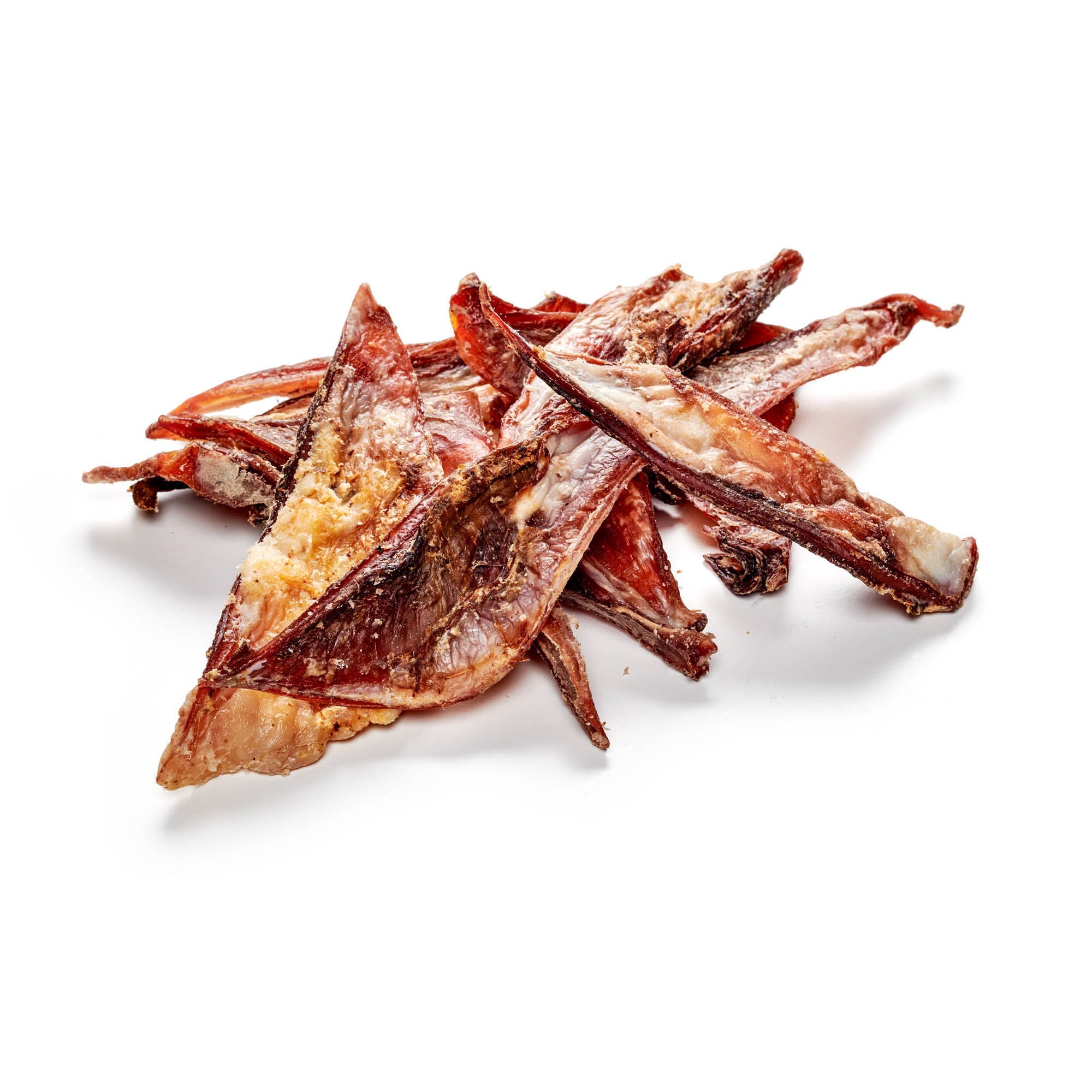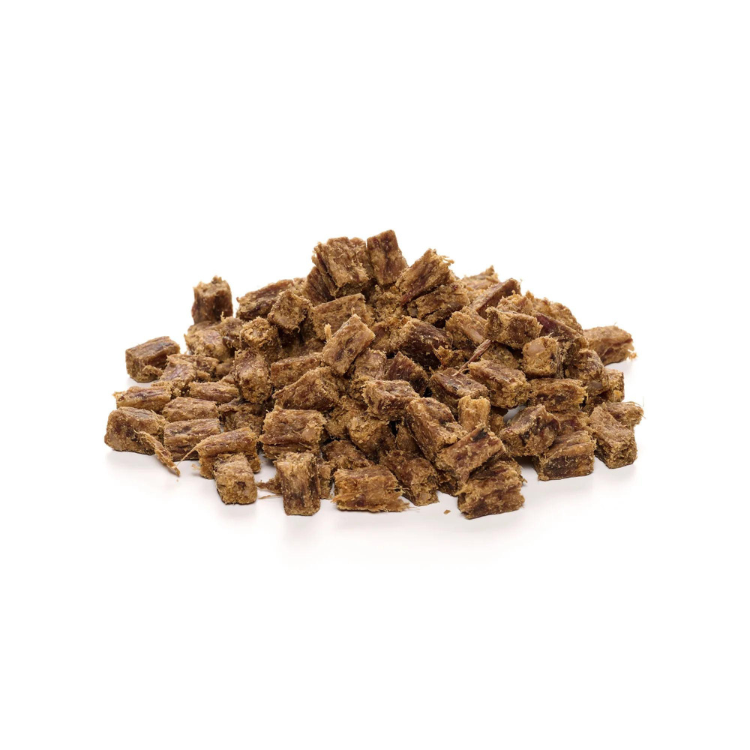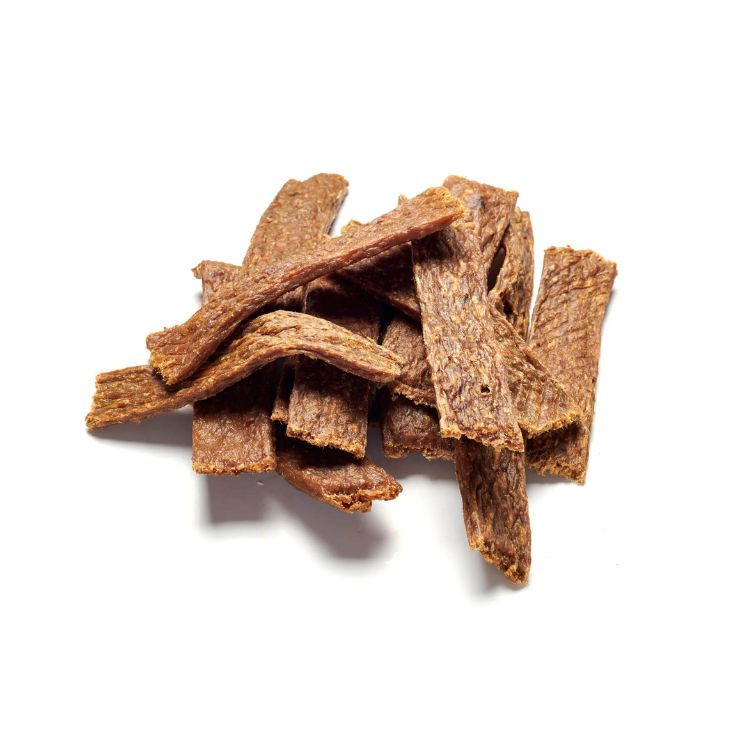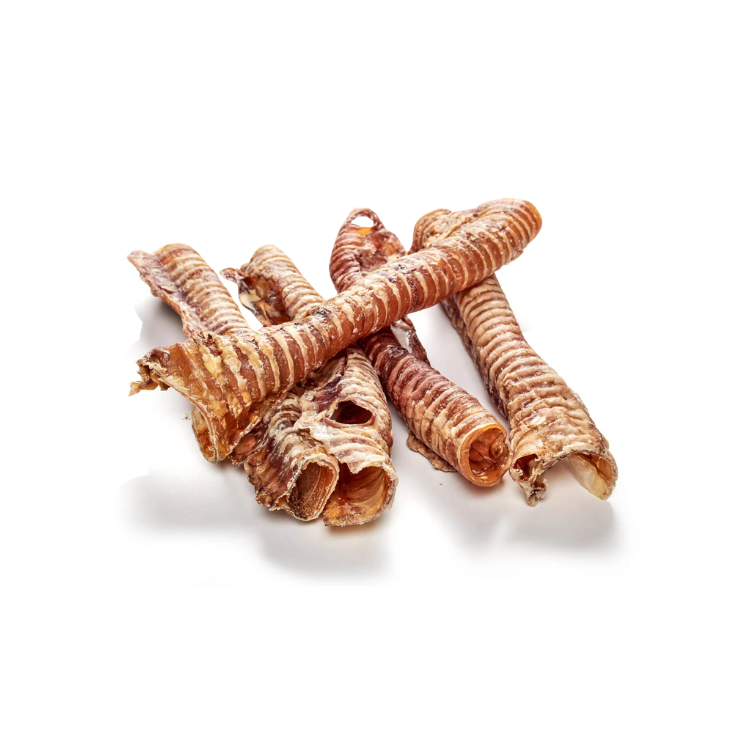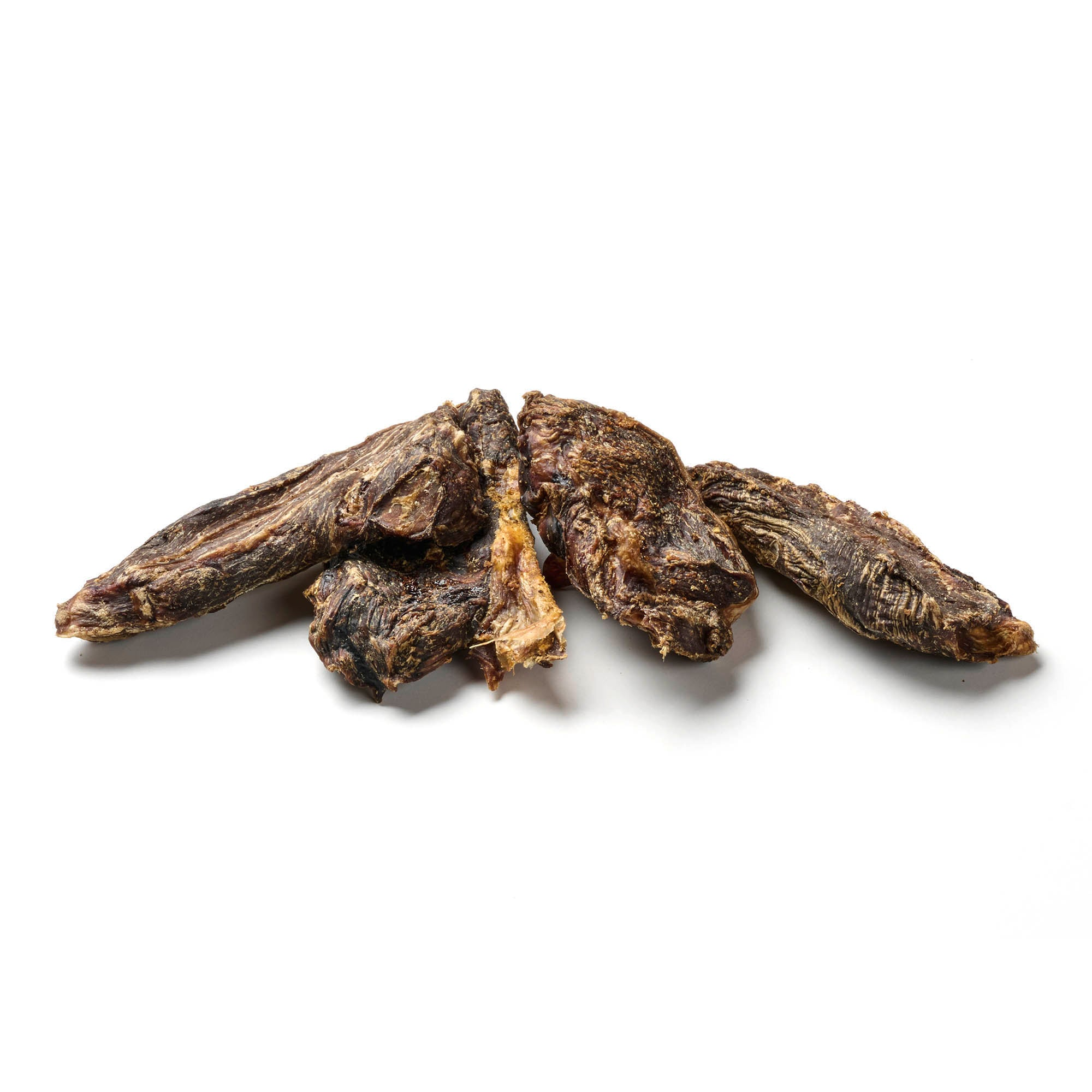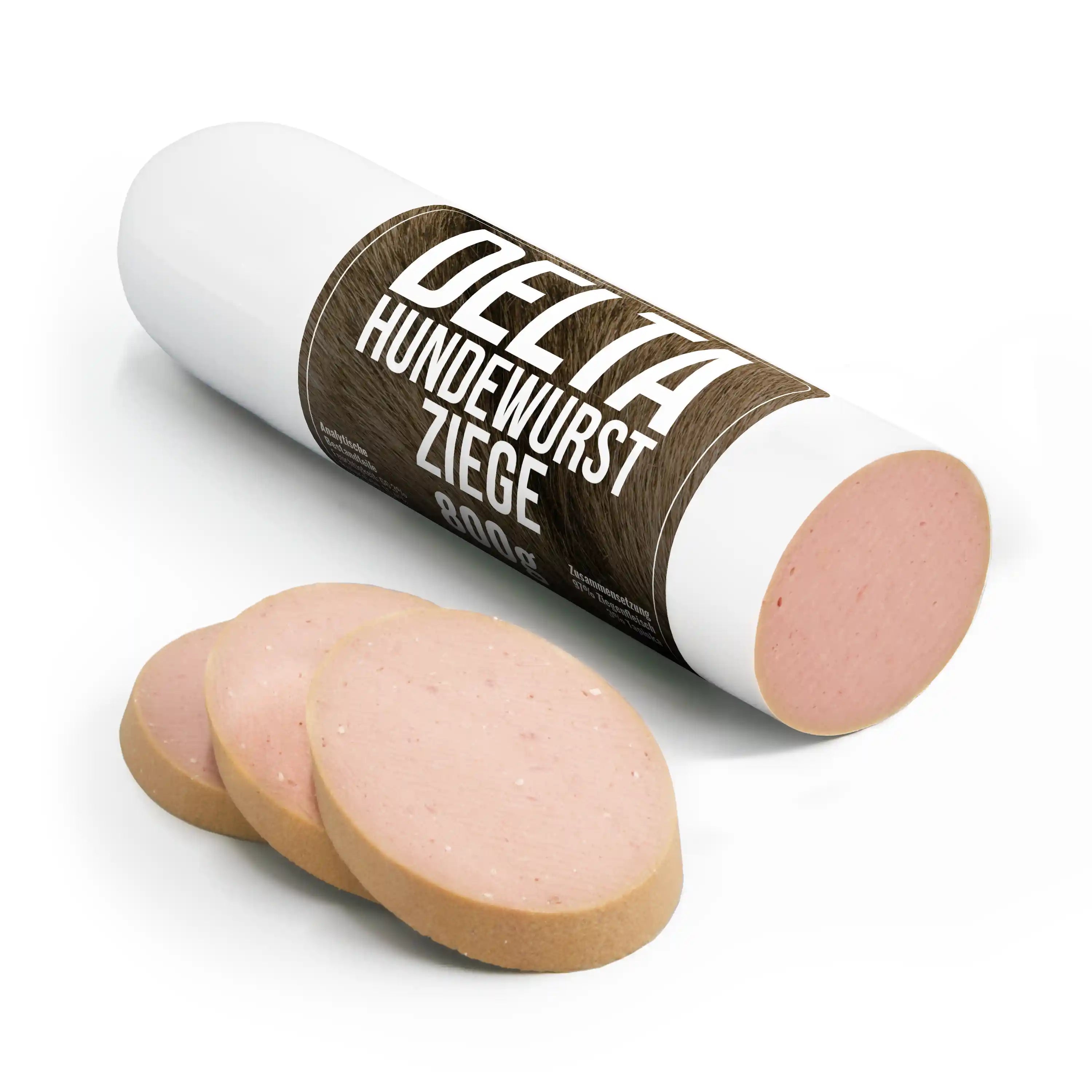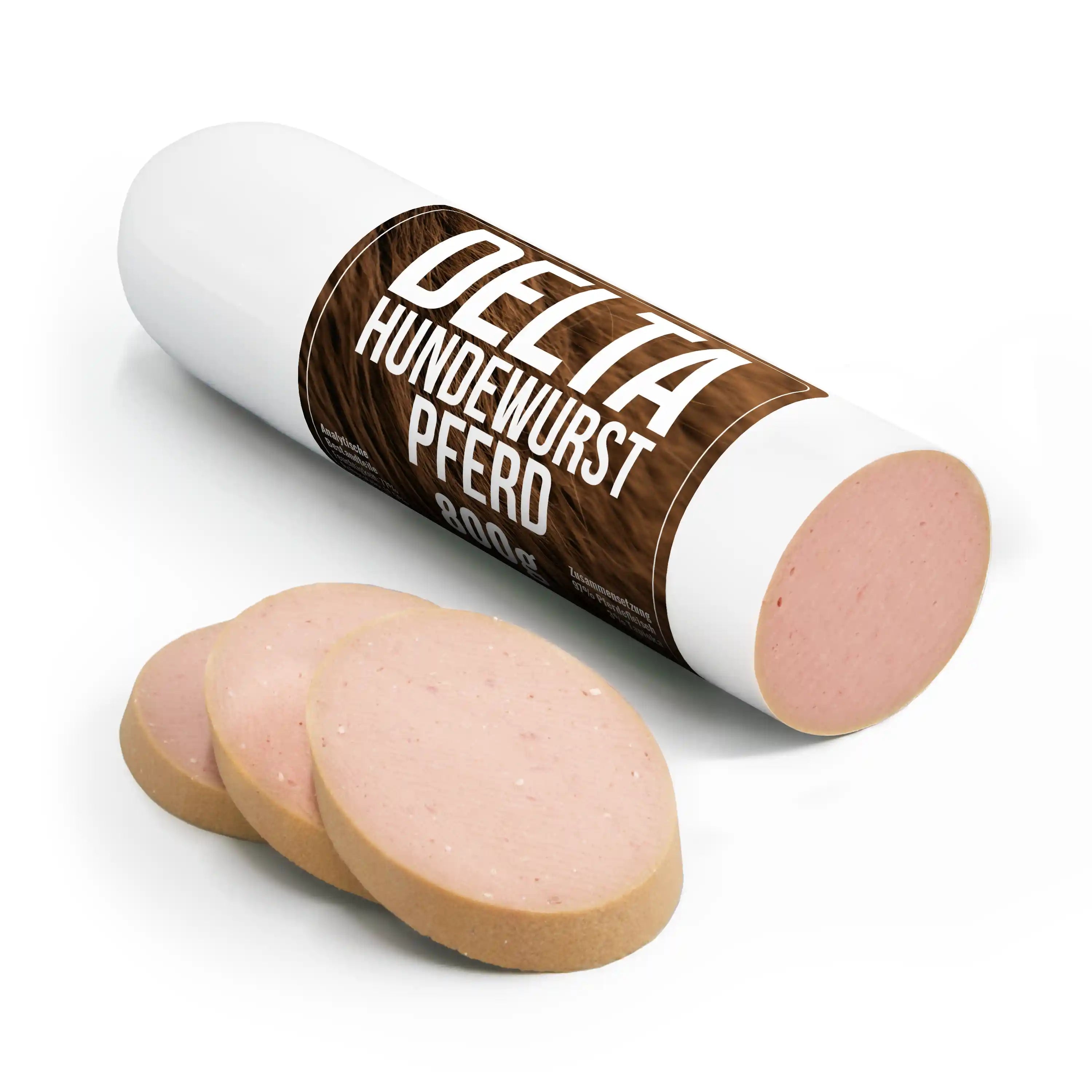
Bloodhound
Share
Bloodhounds are one of the oldest dog breeds and were bred very early on by monks in the Saint-Hubert monastery. They are particularly known for their good scent and have been used for centuries to track down hunting prey. The majestic dogs are very calm creatures, but can also have a strong will at times and know how to get their way with stoic calm.
Content: Bloodhounds
- profile
- Special features
- Nutrition
- Health and care
- The right accessories
- Origin & History
- Conclusion
High quality dog snacks to pamper your dog, now available!
Dog chews for happy and contented four-legged friends available here!
Bloodhound - Profile
- Character: Gentle, calm, friendly, people-oriented, stubborn
- Size: Large
- Height: approx. 62-68 cm
- Weight: 50-55 kg
- Life expectancy: 8-10 years
- Coat type: short hair,
- Colors : Black-Brown
- Special features: Very large ears
- FCI Group: Hounds, Scenthounds and Related Breeds
Bloodhound - Special Features
The Belgian Bloodhounds, also known as Chien de St. Hubert, are among the best tracking dogs in the world. The dogs have been used for hunting since the 2nd century, tracking down dead game. Their nature is extremely calm and sensitive. This makes them a suitable family dog, even if they are rarely seen as such. Despite their friendly nature, the Bloodhound can also become a real stubborn dog that ignores orders and does "its own thing". Once they have picked up a scent, they are almost impossible to stop and can detect scents even days later and over great distances.
Bloodhounds are very large animals and typically have huge floppy ears. The thin and soft skin is covered by a short and silky coat. The breed-specific wrinkles are particularly striking. The long tail stands out in an arch and is very strong. Bloodhounds have an imposing appearance and move majestically, calmly and deliberately.
Like all dogs, the Bloodhound should be trained lovingly but consistently. Harsh training is not good for this gentle animal and will not give you, the owner, any pleasant moments. Keeping such a large dog requires a certain amount of strength and experience. With thorough training and the right effort, you will have a loyal companion with whom you can roam through the woods for hours.
Bloodhound - What should be considered regarding nutrition?
The Bloodhound's diet is not particularly complex. When it is a puppy, the dog should be fed a diet rich in minerals to promote healthy growth. However, too many carbohydrates or fat can harm your four-legged friend, especially during the growth phase. Apart from that, a balanced diet with a high meat content from high-quality sources is recommended. The food should also consist of 20-30% fruit and vegetables. The Bloodhound is ideal for feeding using the BARF method . You can reward it with treats. Bloodhounds like to eat too quickly and are therefore prone to stomach problems. To avoid gastric torsion, a rest period should be observed after feeding.
Discover the range of dog snacks in our store!
Bloodhound - Health and Care
The Bloodhound is very easy to groom. The animals do not tend to shed excessively, nor can their short hair become matted. Regular brushing will, however, make the coat shine and underline the dogs' majestic expression. More important than grooming the coat is checking and cleaning the eyes and ears, which are prone to inflammation due to the folds in the skin. This way you can also recognise illnesses early and prevent your four-legged friend from developing serious health problems. The dogs often suffer from limiting illnesses, especially in their eyes.
In addition to these basic care requirements, the Bloodhound should be taken for long walks every day to ensure it gets enough exercise. These quiet animals are absolutely not suited to life in the city and should be kept in the peace and quiet of country life. The Bloodhound also likes to sleep in a doghouse in the garden. However, care should be taken to ensure that the large dog does not go tracking on its own. Therefore, appropriate fencing is essential.
Bloodhound - The right accessories
Of course, a suitable collar or harness is also essential. Treat your dog to a nice dog basket with a soft cushion in which he can relax after strenuous work and excursions. A soft dog brush and nail clippers are also part of the basic equipment of every dog owner.
Bloodhound - Origin & History
The ancestors of the Bloodhound were used for hunting as early as the 2nd century. Until the 16th century, monks bred the large dogs in the monastery of St. Hubert in the Ardennes. The dogs were very popular because of their robust constitution and exceptional endurance combined with their strong sense of smell. The first Bloodhounds had black fur. The two-colored animals that are common today only developed later. The dogs were bred by the monks until the 16th century and were also used in the Belgian royal pack until then. In German-speaking countries, the name Ardennes Bracke became widespread, while in French-speaking countries the dog is called "Chien de Saint Hubert". Today, the Bloodhound has become increasingly rare. On the North American continent, the dogs are also used by the police. The dogs are often used to search for missing people. If you are looking for such a dog, you should definitely look for experienced and reputable breeders and only buy dogs that have the appropriate certificates.
Conclusion
The Bloodhound is a majestic, gentle and friendly dog with an exceptional nose. Its centuries-old history as a hunting and search dog shows its endurance and strong will. Despite its imposing size and characteristic floppy ears, it is a loving and people-oriented companion. It needs regular exercise, preferably in a quiet rural environment, and consistent but gentle training. Caring for the Bloodhound is relatively easy, but requires special attention to its ears and eyes. Anyone looking for a loyal and unique dog will find a valuable friend in the Bloodhound.
Delicious dog snacks for pure enjoyment are available from us!

